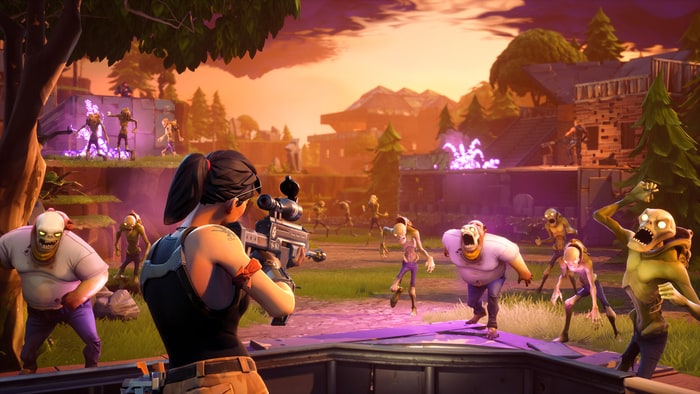Not many games can break through the noise and become a mainstream hit like Fortnite and its Battle Royale mode. It’s a worldwide phenomenon that seemingly everyone — from hip-hop artist Drake to high school students — plays in their spare time.
But instead of focusing solely on Battle Royale’s momentum at this week’s Game Developers Conference, head of Fortnite publishing Ed Zobrist talked about the game’s other mode: Save the World. Don’t blame yourself if you haven’t heard of it before. The little-discussed cooperative mode was, for a time, Fortnite’s main hook: up to four players team up to defend themselves from wave after wave of monstrous creatures. It’s still in the game, but only as an early access beta that you have to pay for.
Zobrist believed that Epic Games’s marketing strategy for Save the World, which was uncommon by industry standards, would be more useful for the developers sitting in the audience. Not surprisingly, the game’s long journey from development (which began in 2011) to release proved to be challenging for Zobrist and his team. At first, Epic planned on launching the game in 2014, which was revealed in a prominent cover story in Game Informer magazine earlier that year. Of course, that never happened.
It’d take another couple of years before the studio settled on a summer 2017 release window. The marketing team had its work cut out for them.
“There were a couple of issues that we had to deal with. One was a sort of indifferent perception about the game. It had gone through a long delay. … It was also an unusual game, a mishmash of a bunch of different genres. So it wasn’t easy to describe in a short, pithy statement,” said Zobrist.
They also faced an additional hurdle when the developers realized that, with just months to go before the July 25th launch date, Fortnite still wouldn’t be ready. At the same time, they still wanted a way to collect feedback from players. That’s when Epic decided to use the early access model for PC and console, where people can pay (via founder’s packs) to play a work-in-progress version of the game.
Zobrist and his team found that the early access tag was a good way of telling the community that Fortnite needed more time. But just like Battle Royale, Save the World will eventually be free when it’s finished.
The next challenge was to come up with a marketing plan that would lead up to Fortnite’s launch. Normally, Zobrist explained, big triple-A publishers announce their games (along with some kind of CG trailer) anywhere between 12 to 18 months before release. Epic did it in seven weeks, re-announcing the game with two gameplay trailers, a website, and a press release. This occurred a few days before the annual Electronic Entertainment Expo, where companies typically announce or show off their next slate of games. Since Fortnite no longer had the surprise factor going for it, the studio wanted to avoid the E3 news vortex.
In the weeks that followed, Epic Games partnered with content creators on YouTube and Twitch to create sponsored videos and exclusive in-game loot, released a CG trailer, and deployed digital ads (it avoided using traditional TV advertisements).
“I’m happy to say that retention is high. Here we are, over six months later, and our audience is larger now than it’s ever been for Save the World — not just for [Battle Royale],” said Zobrist.
He did eventually touch on Battle Royale, which was in development (from Epic’s Unreal Tournament team) around the time that Save the World came out. Originally, it was supposed to be a player-versus-player mode within Save the World. But two weeks before Battle Royale’s September 26th launch, the studio heads changed their mind, thinking it’d work better as a separate mode that anyone could download for free — this was after releasing promo materials that said the PvP mode was part of the pay-to-play package.
So the marketing staff had to put in major overtime to address the sudden shift, working 14 days straight with no weekends off. Zobrist credited the company’s “nimble mindset” for pulling this off so quickly, saying that other big publishers probably wouldn’t be able to do it in that amount of time.
But he did acknowledge that the unprecedented popularity of Battle Royale puts the game in a strange place. For instance, the only reason Save the World even has that name is because Epic needed a way to differentiate the two Fortnite modes.
“We’re in a very interesting branding position,” said Zobrist.
